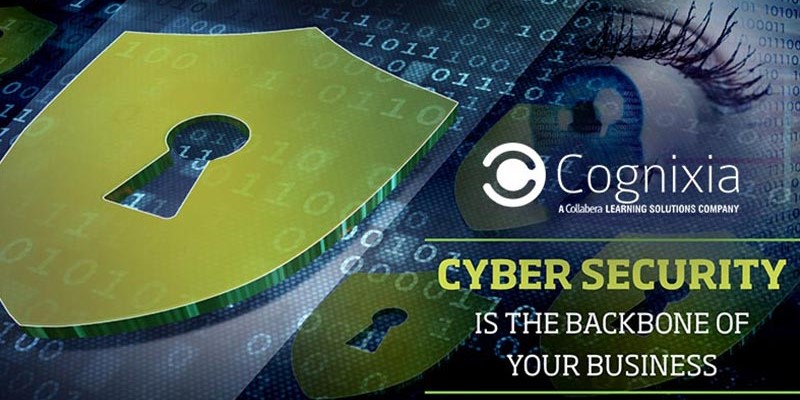In today’s hyperconnected world, your business faces an unprecedented level of digital risk. According to recent statistics, cybercrime damages are projected to reach $10.5 trillion annually by 2025, marking a dramatic increase from $3 trillion in 2015. This staggering figure underscores why cybersecurity must be the foundation of your modern business strategy.
The Evolving Threat Landscape
Your organization operates in an environment where technology advancement is both an opportunity and a vulnerability. Cloud computing, IoT devices, and mobile technology have revolutionized business operations, but they’ve also created new attack vectors for cybercriminals. In 2024, organizations face an average of 1,130 attacks per week, a 38% increase from the previous year.
The Myth of Immunity
You might think your organization is too small or too specialized to be targeted. However, recent data shows that 43% of cyber attacks target small businesses, while 60% of these businesses close within six months of a successful attack. Large enterprises aren’t immune either – in 2023, the average cost of a data breach reached $4.45 million.
The Three Pillars of Modern Cybersecurity
Preparation is your shield
Your organization must develop a comprehensive incident response plan before an attack occurs. This includes:
- Regular security audits and vulnerability assessments
- Documented incident response procedures
- Backup and recovery systems tested quarterly
- Clear communication protocols during security incidents
Organization is your defense
Implement structured security protocols across your enterprise:
- Establish role-based access control (RBAC) systems
- Deploy multi-factor authentication across all systems
- Maintain detailed security logs and monitoring
- Create clear security policies with regular updates
Awareness is your power
Your employees are both your greatest vulnerability and your strongest defense. Recent studies show that 95% of cybersecurity breaches are caused by human error. Combat this through:
- Regular security awareness training
- Simulated phishing exercises
- Clear security protocols
- Continuous professional development
The Rising Threat of Ransomware
One of the most pressing concerns in today’s cybersecurity landscape is the surge in ransomware attacks. Your organization faces sophisticated criminals who have transformed ransomware into a service-based industry. These attackers now offer Ransomware-as-a-Service (RaaS), allowing even technically unsophisticated criminals to deploy devastating attacks. The average ransomware payment has increased to $812,360, reflecting a 70% jump from previous years. More concerning is that 80% of organizations that pay the ransom face a second attack, often from the same threat actors.
The Regulatory Landscape
Your cybersecurity strategy must now account for an increasingly complex regulatory environment. The introduction of stringent data protection laws across global markets means that security breaches can result in severe financial penalties. The General Data Protection Regulation (GDPR) can impose fines of up to 4% of global annual revenue, while various state-level regulations in the United States mandate specific security measures and breach notification procedures. Your organization must navigate these requirements while maintaining operational efficiency.
The Emergence of AI in Cybersecurity
Artificial Intelligence has become a double-edged sword in the cybersecurity landscape. While AI-powered security tools can detect and respond to threats faster than human analysts, cybercriminals are also leveraging AI to create more sophisticated attacks. Your security strategy must evolve to incorporate AI-driven defense mechanisms while preparing for AI-enhanced threats. Organizations utilizing AI-powered security tools detect breaches 12 times faster and contain threats 50% more quickly than those relying on traditional security measures.
The Crucial Role of Cloud Security
As your organization increasingly relies on cloud services, understanding cloud security becomes paramount. The shared responsibility model of cloud security requires a clear delineation of security duties between your organization and cloud service providers. Cloud security breaches have increased by 25% year-over-year, with misconfigured cloud settings remaining the leading cause of data exposure. Implementing proper cloud security controls and maintaining continuous monitoring of cloud environments reduces breach risks by 60%.
Looking ahead, your organization must prepare for emerging threats in quantum computing, 5G networks, and Internet of Things (IoT) devices. The integration of these technologies into business operations creates new security challenges that require innovative solutions. Organizations that proactively adapt their security strategies to address emerging threats experience 35% fewer successful attacks than those maintaining traditional security approaches.
The Path Forward: Professional Certification
In a landscape where cybersecurity positions remain unfilled for an average of 205 days, obtaining professional certification has never been more valuable. The cybersecurity field is projected to have 3.5 million unfilled positions globally by 2025, with an average salary of $100,000 for certified professionals.
Consider pursuing certifications such as:
- CompTIA Security+
- Certified Information Systems Security Professional (CISSP)
- Certified Ethical Hacker (CEH)
- GIAC Security Essentials (GSEC)

Investment in Your Future
Your investment in cybersecurity is an investment in your business’s survival. With cyber-attacks occurring every 39 seconds on average, the question isn’t whether your organization will face an attack, but when. By prioritizing cybersecurity and pursuing a professional certification, you’re not just protecting your assets – you’re securing your organization’s future in the digital age.
The time to act is now. Every day without proper cybersecurity measures puts your organization at risk. Begin your journey toward cybersecurity excellence by investing in professional certification and implementing robust security measures. Your business’s survival in the digital age depends on it.
Get CISSP certification with Cognixia
Once you have employees with the CISSP certification, they will demonstrate their skills to benefit your business with –
- Complete understanding of how to secure or protect confidential business data from hackers.
- Analyze risks and be aware of the common hacker strategies that can affect your business. They can determine the weak points of the organizations and work on them.
- Aptitude in improving not only the customer but also employee privacy ensuring all the information stays with the business only.
Get (ISC)2 CISSP Training & Certification and increase your business visibility as well as credibility in the cybersecurity market. Cognixia is the world’s leading digital talent transformation company that offers a wide range of courses, including CISSP training online with a comprehensive CISSP study guide.
Here’s what you will learn in this course –
- Learn and apply the concepts of security & risk management
- Gain an understanding of security engineering to protect information by exploring and examining security models and frameworks
- Learn how to identify, categorize, & prioritize assets
- Examination and security network architecture and its components
- Learn how to identify & control access to protect assets
- Designing and conducting security assessment strategies, logging, & monitoring activities
- Developing a recovery strategy and maintaining operational resilience
- Learn how to secure the software development cycle
Prerequisites
- Candidates for the CISSP certification should have at least 5 years of total paid work experience in two or more of the 8 CISSP CBK domains. Any extra certificate from the (ISC)2 authorized list, a four-year college degree, or a regional equivalent would qualify as one year of the necessary experience.
- If a candidate doesn’t have enough experience to qualify as a CISSP, they can still become an Associate of (ISC)2 by completing the CISSP test. After that, they will have 6 years to acquire the 5 years of necessary experience.

